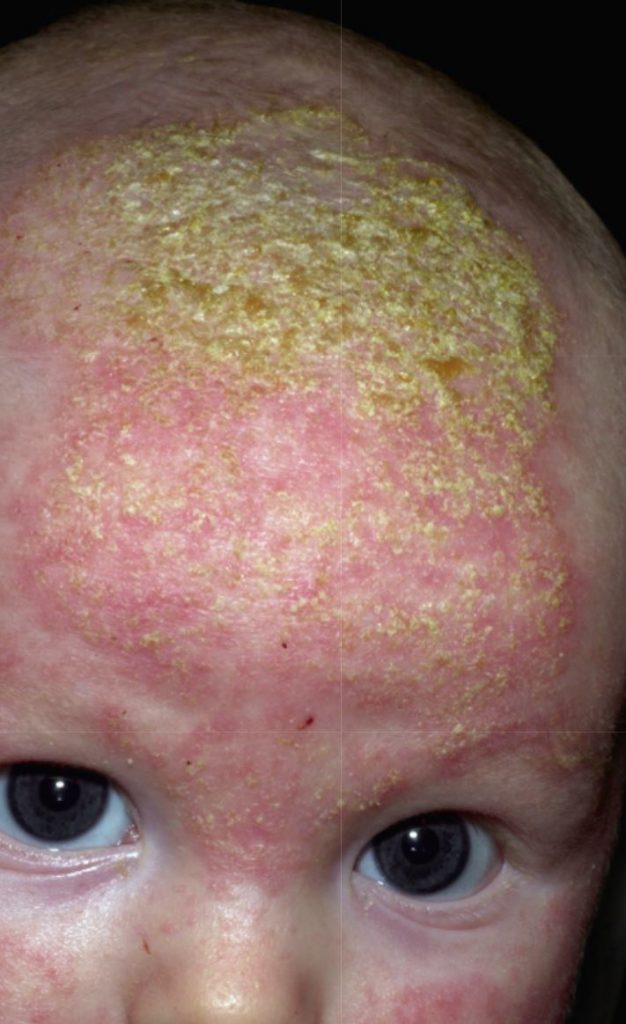Seborrhoeic dermatitis is inflammation of the skin that usually occurs on areas of the body such as the head and trunk where there are a greater number of oil glands.
The condition can occur in the first year of life when it is called “cradle cap” or develops from puberty onwards.
Mild cases occurring on the scalp can affect many individuals and this is usually known as “dandruff”.
Although the exact cause is unclear, seborrhoeic dermatitis is thought to involve an abnormal immune response against a fungal yeast organism called Malassezia. This fungal organism is found on the healthy skin of all people and is usually present in greater numbers on the areas of the body that produce the most oil (sebum).
Whilst the majority of people have no problem with Malassezia being present on the skin, it is not known why some individuals develop an abnormal immune reaction against this organism.
The main feature of seborrhoeic dermatitis is greasy white or yellowish scales occurring over a patch of inflamed red skin. It typically occurs on the scalp and central face around the nose and eyebrows, but may also affect the forehead, beard area and skin around the ears. The upper central chest and back may also be affected.

In babies with “cradle cap” the scalp is usually affected but redness and scaling may also occur in skin crease areas such as the armpits, under the neck and groin. The condition usually resolves within the first 12 months of age.
Seborrhoeic dermatitis is occasionally itchy.

A Color Guide to Diagnosis and Therapy
SEVENTH EDITION James G.H. Dinulos, MD
Seborrhoeic dermatitis is more common in people who have psoriasis, Parkinson’s disease, epilepsy or HIV infection.
Formal testing is not usually needed to reach a diagnosis of seborrhoeic dermatitis. In some cases skin scrapings may be taken for fungal culture.
When the condition affects the scalp, shampoos containing tar or antifungal agents (such as selenium sulfide, ketoconazole, miconazole or ciclopirox) are usually effective.
Creams containing antifungal and/or corticosteroid can be used for the face and trunk. Agents that help exfoliate the scaly skin such as salicylic acid are also useful. Treatment often needs to be used on a regular basis in order to clear the condition completely, with intermittent use thereafter to maintain long term control.
In babies, cradle cap can be treated by softening the scales on the skin with a little olive oil applied before bathing, and then removing the scales gently with a cotton bud. Sometimes a cream containing a mild corticosteroid (such as hydrocortisone 1%) or an antifungal agent or a tar-based product may also be useful to clear the scaling.
Seborrhoeic dermatitis is usually chronic and can wax and wane in severity over time. In adults some form of regular or occasional treatment is usually needed to keep the condition under control.
Cradle cap in babies usually clears on average after 6 to 12 months of age but may take longer to clear in some infants.
This information has been written by Dr Nicholas Aspres
Disclaimer
2019 © Australasian College of Dermatologists.
You may use for personal use only. Please refer to our disclaimer.